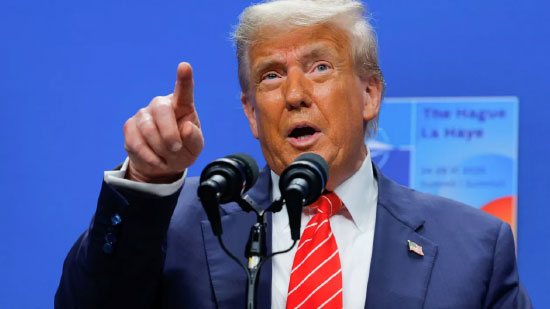
U.S. President Donald Trump said he would not offer any extensions to the new August 1 deadline for countries to start paying reciprocal tariffs.
“Tariffs will begin to be paid on August 1, 2025. That date has not changed and will not change,” Trump wrote on the Truth Social platform on Tuesday. “In other words, all payments will be due and payable on August 1, 2025 — no extensions will be granted.”
Trump began notifying trading partners of the new tariff rates on Monday, a week before countries were due to complete trade talks with the Trump administration.
However, the new letters, which unilaterally set tariffs on countries that did not reach an agreement, were accompanied by an executive order delaying the tariffs’ effective date by three weeks, effectively offering trading partners an extension to negotiate. Speaking to reporters late Monday, Trump also said his August 1 deadline was “not 100% certain,” suggesting he could change his position in exchange for more concessions.
That statement, along with Trump's signal that more deals were still being negotiated, had raised doubts in some parts of Washington and Wall Street about whether the president would follow through on his latest tariff threats.
On Tuesday, Trump took a tougher tone when speaking to reporters during a Cabinet meeting.
Trump also said he was close to sending a unilateral letter to the European Union setting tariff rates, despite reported progress in trade talks with the bloc. Trump said that while European countries are now "very friendly to us," he remains frustrated with the long-standing trade deficit and the digital services taxes and fines affecting U.S. tech companies.
"We're probably two days away from sending a letter to the European Union," Trump said.
In addition, Trump said he would send more letters in the coming days that would announce tariffs of 60% or 70% on some countries.
"I just want you to know that a letter means a deal," Trump said.
Trump's comments came after traders seemed to react flatly to his tariff demand letter issued on Monday. But markets fell to session lows after his Tuesday post, suggesting traders may be thinking the president is growing more determined to move forward with his tariff plans.
The move is just the latest in a Trump trade agenda that has seen numerous delays and back-and-forths. Trump has used the threat of tariffs to reshape global trade and pressure companies to move more manufacturing jobs back to the U.S., roiling financial markets in the process.
After announcing tariffs of 25% to 40% on a number of countries, Trump said he was open to further negotiations.

%20--%3e%3c!DOCTYPE%20svg%20PUBLIC%20'-//W3C//DTD%20SVG%201.1//EN'%20'http://www.w3.org/Graphics/SVG/1.1/DTD/svg11.dtd'%3e%3csvg%20version='1.1'%20id='图层_1'%20xmlns='http://www.w3.org/2000/svg'%20xmlns:xlink='http://www.w3.org/1999/xlink'%20x='0px'%20y='0px'%20width='256px'%20height='256px'%20viewBox='0%200%20256%20256'%20enable-background='new%200%200%20256%20256'%20xml:space='preserve'%3e%3cpath%20fill='%23FFFFFF'%20d='M194.597,24.009h35.292l-77.094,88.082l90.697,119.881h-71.021l-55.607-72.668L53.229,232.01H17.92%20l82.469-94.227L13.349,24.009h72.813l50.286,66.45l58.148-66.469V24.009z%20M182.217,210.889h19.566L75.538,44.014H54.583%20L182.217,210.889z'/%3e%3c/svg%3e)